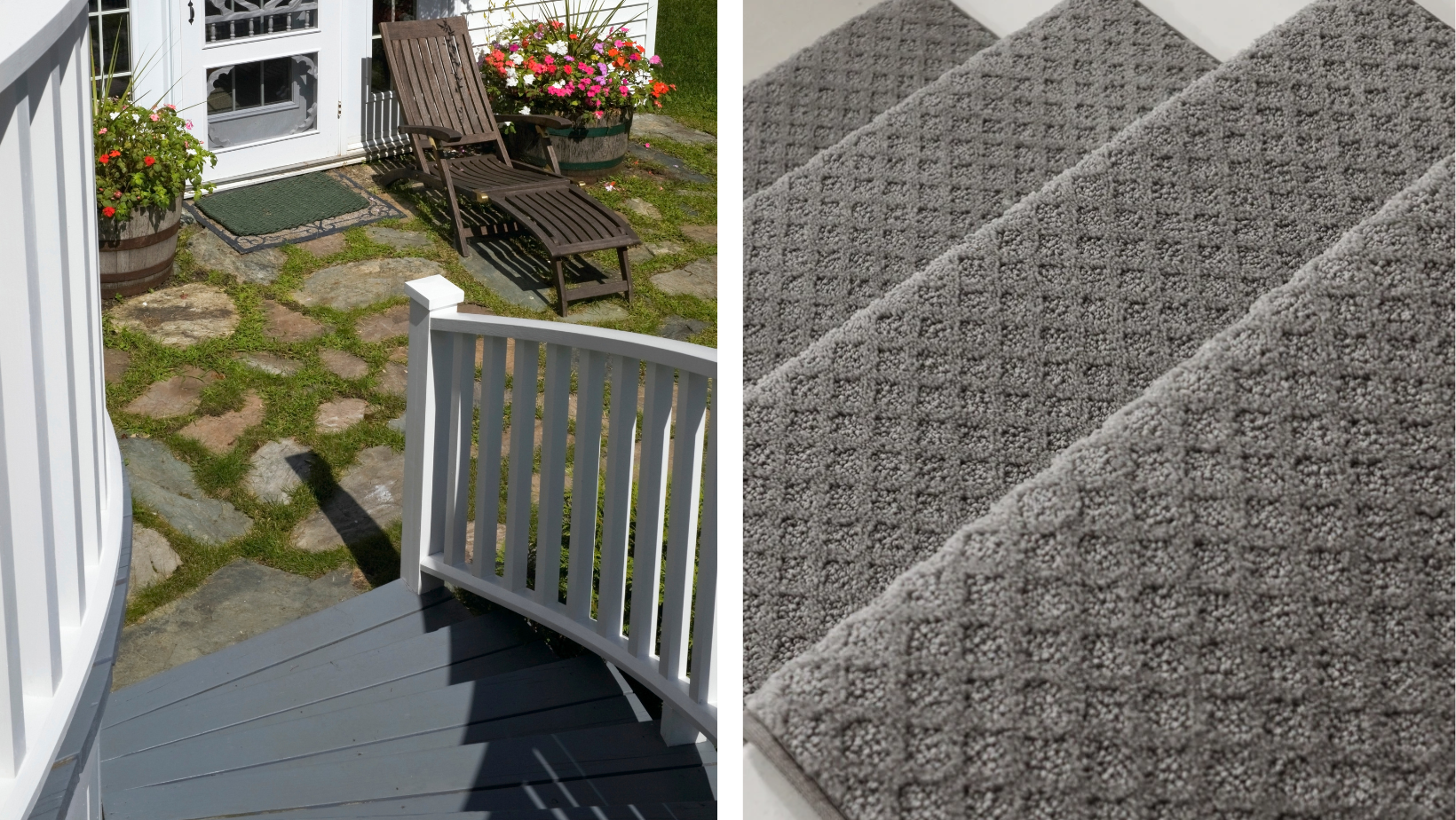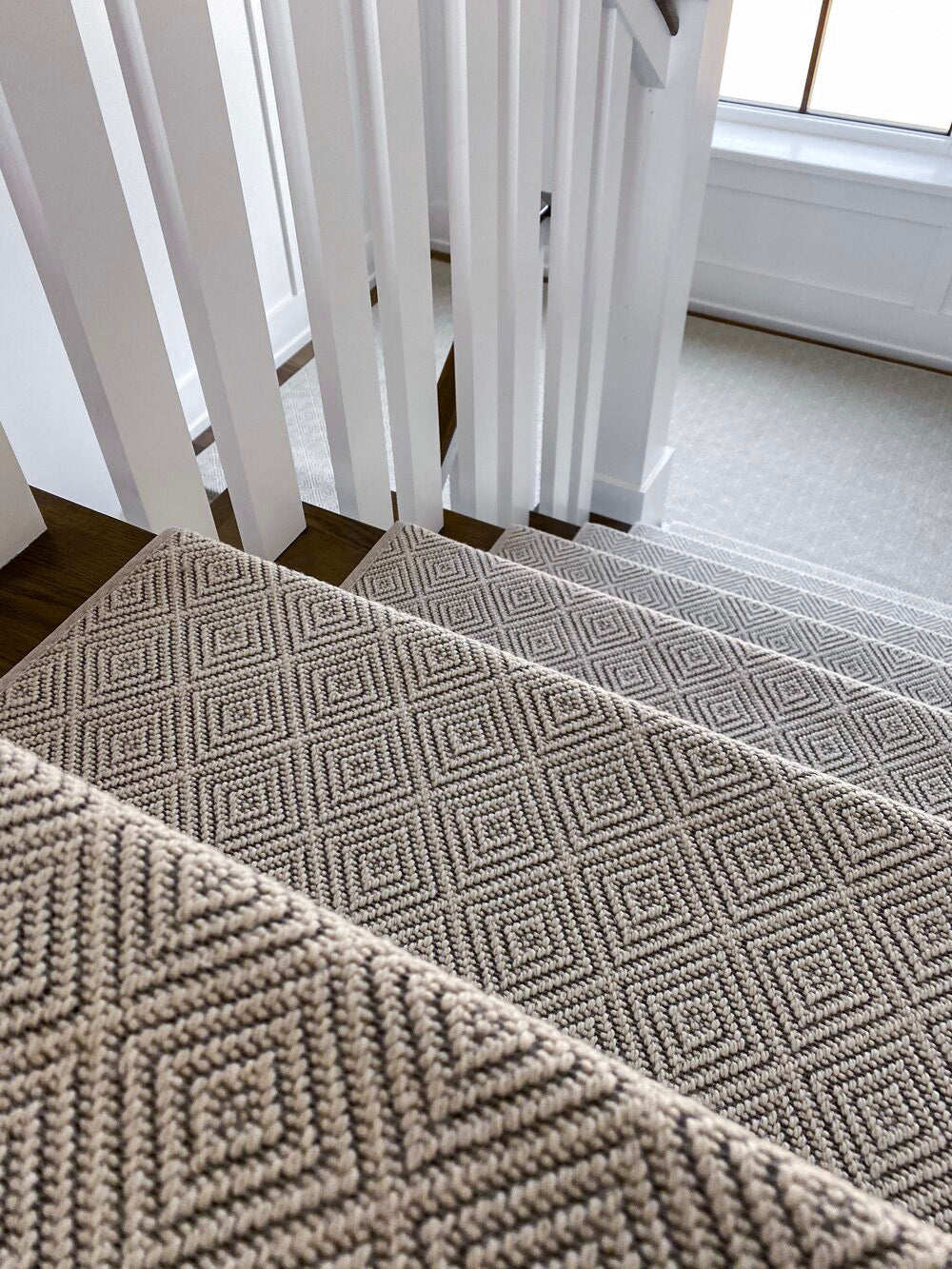Polyurethane protects wood stairs from scratches, moisture, and wear.
So, how many coats of polyurethane on wood stairs is needed?
The Answer: three coats.
If you plan to add carpet stair treads, let the polyurethane fully cure to prevent adhesion issues.
Applying too few coats leaves the wood vulnerable to damage.
Too many coats can cause peeling or an uneven finish.
A proper application ensures durability and a smooth, long-lasting surface.
What is Polyurethane and Why is it Important for Wood Stairs?
Polyurethane is a protective wood finish that creates a strong, transparent layer over surfaces, shielding them from scratches, moisture, and wear.
Available in oil-based and water-based varieties, polyurethane enhances the durability of wood stairs while preserving their natural beauty.
When properly applied, polyurethane prevents damage caused by heavy foot traffic, pets, and environmental factors like humidity.
Without this protective finish, wood stairs are prone to warping, discoloration, and surface scratches that can diminish their lifespan and appearance.
Why Polyurethane is Essential for Wood Stairs
Wood stairs endure constant use, which makes them vulnerable to scuffs, dents, and stains.
Polyurethane acts as a barrier that protects the wood from daily wear and tear while maintaining its visual appeal.
Benefits of Applying Polyurethane on Wood Stairs
-
Protection Against Scratches and Damage – Wood stairs without a protective finish can develop scratches, dents, and wear patterns over time. Polyurethane creates a hard surface that prevents these issues.
-
Moisture Resistance – Wood naturally absorbs moisture, which can cause swelling and warping. Polyurethane seals the wood, reducing the risk of damage caused by humidity or spills.
-
Enhances Natural Beauty – Polyurethane deepens the color and highlights the grain of the wood, creating a polished, high-end look.
-
Increases Longevity – By protecting the surface from daily wear, polyurethane extends the lifespan of wood stairs, reducing the need for frequent refinishing.
-
Easy Maintenance – Polyurethane-coated stairs are easy to clean and maintain with regular sweeping and occasional damp wiping.
How Many Coats of Polyurethane Should You Apply on Wood Stairs?
The number of polyurethane coats needed depends on the type of wood, the level of foot traffic, and the environmental conditions.
However, as a general rule, applying three coats of polyurethane is recommended for bare wood stairs.
This ensures adequate protection without overbuilding the finish.
Factors That Affect the Number of Coats Needed
-
Type of Wood – Softer woods, like pine, absorb polyurethane more than hardwoods like oak. Softwoods may require an additional coat for proper sealing.
-
Existing Finish – If the stairs already have a finish, fewer coats of polyurethane may be needed. However, sanding is necessary to ensure proper adhesion.
-
Foot Traffic – Stairs in high-traffic areas, such as entryways, require more coats to withstand daily use.
-
Environmental Conditions – Temperature and humidity levels affect drying time and the number of coats needed.
Recommended Number of Coats Based on Wood Type
-
Bare wood stairs: Three coats for maximum durability.
-
Previously finished stairs: One or two coats, depending on wear and adhesion.
-
High-traffic stairs: Three to four coats for long-term protection.
-
Stairs with an aluminum oxide finish: One coat to enhance durability.
How to Polyurethane Stair Treads for a Durable Finish
Applying polyurethane correctly is essential for achieving a smooth and long-lasting finish.
Proper preparation, product selection, and application techniques will ensure your stairs remain in excellent condition for years.
Step 1: Prepare the Wood Surface
Before applying polyurethane, the wood must be clean, smooth, and free from old finishes or imperfections.
-
Sand the stair treads with 120-grit sandpaper to remove previous coatings and rough spots.
-
Follow up with 220-grit sandpaper for a fine, smooth surface.
-
Vacuum and wipe the stairs with a tack cloth to remove dust and debris.
Step 2: Choose the Right Type of Polyurethane
There are two main types of polyurethane:
-
Water-Based Polyurethane – Dries faster, has a low odor, and maintains a clear finish without yellowing over time.
-
Oil-Based Polyurethane – Provides a more durable finish and enhances the wood's natural color but has a longer drying time.
Step 3: Apply the First Coat
-
Use a high-quality brush or foam applicator to apply a thin, even layer of polyurethane.
-
Follow the wood grain to prevent streaks and bubbles.
-
Let the first coat dry for 4-6 hours (water-based) or 24 hours (oil-based).
Step 4: Sand Between Coats
-
Lightly sand the dried polyurethane using 220-grit sandpaper or a fine sanding pad.
-
Remove dust with a tack cloth before applying the next coat.
Step 5: Apply Additional Coats
-
Repeat the application and sanding process for at least three coats.
-
Allow proper drying time between coats to avoid a sticky or uneven finish.
Common Mistakes to Avoid When Applying Polyurethane on Wood Stairs
Applying polyurethane seems simple, but small mistakes can ruin the finish.
Avoiding common errors ensures a smooth, durable, and professional-looking result.
Not Sanding Between Coats
Skipping sanding can lead to a rough or uneven surface.
Lightly sanding between coats ensures a smooth and professional finish.
Applying Thick Coats
Thick coats take longer to dry and are prone to bubbling.
Always apply thin, even layers for the best results.
Using the Wrong Brush
A low-quality brush can leave visible streaks and bristles in the finish.
Use a high-quality synthetic brush for water-based polyurethane or a natural bristle brush for oil-based products.
Not Allowing Enough Drying Time
Rushing the drying process can cause the finish to remain tacky or lead to poor adhesion between layers.
Always follow the manufacturer’s recommended drying time.
Maintaining Wood Stairs with a Polyurethane Finish
Proper maintenance keeps polyurethane-coated stairs looking new for years.
Simple cleaning and occasional touch-ups prevent damage and preserve the finish.
Regular Cleaning and Maintenance
-
Sweep or vacuum regularly to remove dirt and debris.
-
Use a damp microfiber cloth with a mild wood cleaner to wipe the surface.
-
Avoid using abrasive pads or harsh chemicals that could wear down the polyurethane coating.
Repairing and Reapplying Polyurethane
-
If scratches appear, lightly sand the area and apply a fresh coat of polyurethane.
-
For stairs with extensive wear, reapply polyurethane every 5-7 years to maintain protection.
Choosing the Best Polyurethane for Wood Stairs
Selecting the right polyurethane is essential for achieving a durable and long-lasting finish.
Understanding the differences between oil-based and water-based options helps ensure the best results for your wood stairs.
Oil-Based vs. Water-Based Polyurethane
Oil-based polyurethane provides a rich, warm tone and is highly durable, making it ideal for high-traffic stairs.
However, it takes longer to dry and has a stronger odor compared to water-based alternatives.
Water-based polyurethane dries faster, has a lower odor, and remains clear without yellowing over time.
If you prefer a quick application with easy cleanup, water-based is a great choice, while oil-based is better for maximum durability.
Choosing the Right Sheen for Your Stairs
Polyurethane comes in different sheens, including matte, satin, semi-gloss, and gloss.
A matte or satin finish provides a subtle, natural look with less visible scratches, while a gloss finish enhances the wood’s shine but requires more maintenance.
Satin is a popular choice for wood stairs as it balances aesthetics and durability.
How Long Does Polyurethane Last on Wood Stairs?
The longevity of polyurethane depends on the number of coats applied, traffic levels, and maintenance.
A well-applied polyurethane finish can last for several years before requiring touch-ups or refinishing.
Signs It’s Time to Reapply Polyurethane
Fading, dullness, or visible scratches indicate that the polyurethane coating is wearing down.
If the wood starts absorbing moisture or feels rough, it’s time to reapply a protective layer.
Regular inspections help prevent damage and keep the stairs looking their best.
Extending the Lifespan of Your Polyurethane Finish
To extend the life of polyurethane, clean the stairs regularly with a damp cloth and avoid harsh chemicals.
Adding carpet stair treads can reduce direct wear and protect high-traffic areas.
With proper care, a polyurethane finish can last 5-7 years before needing a refresh.
Stepping It Up
Applying polyurethane to wood stairs is essential for long-term durability and beauty.
In most cases, three coats of polyurethane provide the best protection against scratches, moisture, and daily wear.
Proper preparation, application, and maintenance will ensure your stairs remain in top condition for years to come.
If you're looking to enhance both safety and style, consider installing carpet stair treads after applying polyurethane.
They provide an extra layer of protection and comfort while complementing the natural wood finish.
Contact Us Today!
For a safe and stylish stair upgrade, explore Oak Valley Designs' premium carpet stair treads. Contact us today.
-
Website: https://oakvalleydesigns.com/
-
Phone: 706.331.0315
-
Email: info@oakvalleydesigns.com
-
Address: 30 River Ct SW Bldg E Cartersville, Ga 30120




